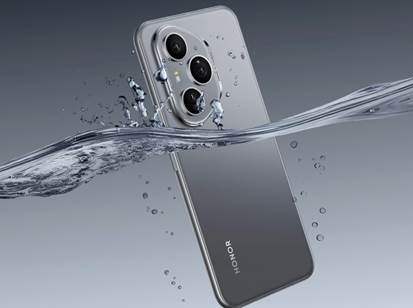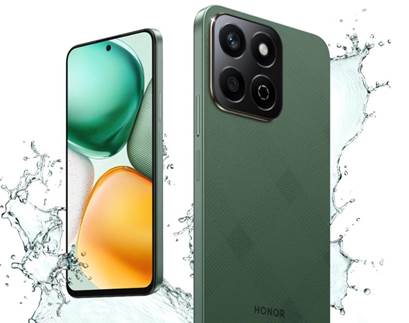Smart
cities rely on technology to create efficient, sustainable, and connected urban
environments. At the center of this transformation, smartphones serve as
everyday tools linking residents to city systems. They act as digital keys,
wallets, and dashboards, integrating individuals into the fabric of a smart
city. From transport coordination to energy management, smartphones bring
services directly into people’s hands. They empower citizens to interact with
their surroundings, make informed choices, and contribute to collective goals.
By examining how smartphones connect mobility, governance, and community life,
we can understand their central role in shaping smarter, more livable cities.

Smartphones as
Urban Connectors
Smartphones
connect people to essential services that define smart cities. They streamline
movement, improve accessibility, and ensure smoother everyday interactions.
Enhancing
Mobility and Transportation
Smartphones
function as guides for navigating urban transport. Residents use them to access
ride-sharing, real-time bus tracking, and digital ticketing. Applications help
commuters plan routes, reduce waiting times, and choose the most efficient
travel options. Smartphones also integrate with smart infrastructure, such as
bike-sharing systems or electric vehicle chargers. A single app can guide users
from subway to bike lane, creating seamless journeys. This efficiency reduces
congestion and supports sustainability. By linking mobility services together,
smartphones transform cities into more connected and accessible spaces.
Streamlining
Payments and Transactions
Digital
payments turn smartphones into wallets for city life. Citizens pay for parking,
metro rides, or public services with one tap. Local businesses benefit from
faster, more secure transactions. Street vendors, cafes, and markets expand
their reach through mobile payment systems. Governments also save resources by
reducing reliance on cash-based systems. This convenience increases
participation in city programs and events. With smartphones simplifying
payments, residents engage more fully with their communities, enjoying smoother
and more inclusive experiences in urban living.
Improving
Accessibility of Services
Smartphones
ensure that essential city services reach more people. Residents use apps to
request utilities, book medical appointments, or access public records.
Notifications alert them about waste collection, water supply updates, or local
safety measures. Language options and voice commands help break down barriers,
making services inclusive for all. Smartphones also provide instant
translation, enabling diverse communities to interact smoothly. This level of
accessibility strengthens trust between citizens and city administrations. By
ensuring services are only a click away, smartphones empower individuals to
live more comfortably in urban environments.
Smartphones as
Tools for Governance and Sustainability
Smartphones
also shape how cities manage resources, promote sustainability, and encourage
civic engagement. They act as bridges between citizens and governments,
ensuring transparency and efficiency.
Supporting
Smart Governance
City
leaders use smartphone platforms to share policies, updates, and initiatives.
Residents can report local issues—such as damaged streetlights or blocked
drains—directly through apps. This real-time communication helps authorities
act faster and builds accountability. Digital voting systems and surveys also
allow citizens to voice opinions easily. By using smartphones as tools for
governance, cities promote inclusivity, ensuring that residents play an active
role in shaping their environment. These interactions strengthen democratic
participation while maintaining efficiency in decision-making.
Promoting
Sustainable Living
Smartphones
help citizens adopt eco-friendly practices. Apps track energy usage, suggest
recycling schedules, and encourage greener commuting. People monitor their
electricity consumption and receive tips for reducing waste. Ride-sharing
platforms lower emissions by promoting shared travel. In some cases, reward
systems give points for sustainable actions like cycling to work or conserving
water. Devices from HONOR Philippines
demonstrate how advanced smartphones can integrate seamlessly with eco-focused
apps, encouraging citizens to make responsible choices. In this way,
smartphones not only simplify lives but also contribute directly to a city’s
environmental goals.

Encouraging
Community Engagement
Communities
thrive when people connect, share, and collaborate. Smartphones make this easy
by supporting local networks, neighborhood apps, and volunteer platforms.
Residents can join clean-up events, share resources, or support local charities
through mobile channels. Schools and cultural centers promote events directly
to families’ phones, ensuring participation stays high. These connections help
foster stronger neighborhoods. By encouraging cooperation and belonging,
smartphones enhance the human side of smart cities. They ensure technology
strengthens—not replaces—the relationships that form community life.
Conclusion
Smartphones
will play a vital role in smart cities by connecting people to services,
streamlining governance, and supporting sustainable living. They enhance
mobility with real-time transport solutions, simplify payments for daily
transactions, and make essential services more accessible. They also empower
citizens to engage with local governments, promote eco-friendly habits, and
strengthen community ties. The versatility of smartphones makes them more than
devices; they are bridges between individuals and their cities. By linking
convenience with responsibility, smartphones ensure that future cities will not
only be efficient but also more inclusive, connected, and sustainable for
everyone.
